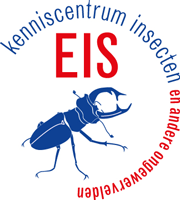| Reële kans op vestiging? |
Ja |
|
| Betrouwbaarheid beoordeling |
Grote mate van zekerheid (meerdere bronnen) |
|
| Vestigingsstatus |
Gevestigd |
|
| Zeldzaamheid |
Zeer algemeen |
|
| Invasiviteit |
Invasief |
|
| Invasiviteit (toelichting) |
A. modestus is native to New Zealand and southern Australia (Harms 1999). It was Introduced into Europe in 1940-1943 on ships’ hulls (Bishop 1947, Stubbings 1950) and dispersed further in Europe by hull fouling and marine currents (Crisp 1958). Its invasiveness is extremely large. It has the ability to live in a relatively wide range of habitats from -3-4 m to high in the intertidal. It can become very abundant in a very short time. It grows very fast and has a very high fecundity (Crisp & Davies 1955). The species is hermaphroditic (but requires cross-fertilization). It produces broods throughout the year, releasing each brood within two weeks (Barnes & Barnes 1968). It tolerates lower salinity and higher temperatures than most native barnacles, except the other introduced species, Balanus improvisus (Gittenberger et al. 2010). |
|
| Type introductie |
Niet opzettelijk |
|
| Jaar van eerste introductie |
1946 |
|
| Jaar van eerste melding |
1948 |
|
| Natuurlijke verspreiding |
Zuidelijke Stille Oceaan |
|
| Verspreiding in Nederland |
Friesland |
|
Groningen |
|
Noord-Holland |
|
Zuid-Holland |
|
Zeeland |
|
| Verspreiding in Nederland (toelichting) |
E. modestus was first found in the Netherlands in 1946 (Boschma 1948, Leenhouts 1948). It spread extremely fast through the Dutch coastal waters and along the North Sea coast (Stock 1949) en has colonized the entire coast, including the Wadden Sea, at 1951 (Wolff 2005). There it is now the most abundant barnacle by far, inhabiting a wide range of littoral and sublittoral habitats (Gittenberger et al. 2010). This is also the case at many localities in the province of Zeeland (Vaas 1975). It is nowadays a very common species in the Netherlands, to be found almost everywhere, except in deeper offshore localities. |
|
| Habitats |
Mariene habitats |
|
Estuaria en brakwatergebieden |
|
Kustgebied |
|
| Wijze van introductie |
Aquacultuur |
|
Aangroei op scheepsrompen |
|
Onderling verbonden waterwegen/bassins/zeeën |
|
| Impact |
Concurrentie |
|
| Ecologische impact (toelichting) |
E. modestus competes for space and food with several native shallow-water barnacle-species. In some places worldwide it almost completely replaced the native barnacles (Lawson et al. 2004). In the Dutch littoral it competes in particular with the native barnacle Semibalanus balanoides, in the sublittoral zone with the native barnacle Balanus crenatus. In this way the species has a distinct impact on the flora and fauna living on hard substrata along the entire Dutch coast, especially in the provinces of Zeeland and the Wadden Sea (Gittenberger et al. 2010). |
|
| Economische impact (toelichting) |
E. modestus is a frequent fouling species at all kinds of hard substrata, including ships’ hulls (Gollasch 2002) and in this way a nuisance to the shipping industry. It also may be one of the species fouling pipes of power plants and other facilities. Cleaning materials of fouling species may lead to high costs. On the other hand the species is used as test organism for toxicity tests: especially the larvae are very sensitive and the fact that the species produces larvae almost throughout the year is favourable for monitoring and tests (Corner et al. 1968). There are no data available on the economic impact of this species in the Netherlands. |
|


